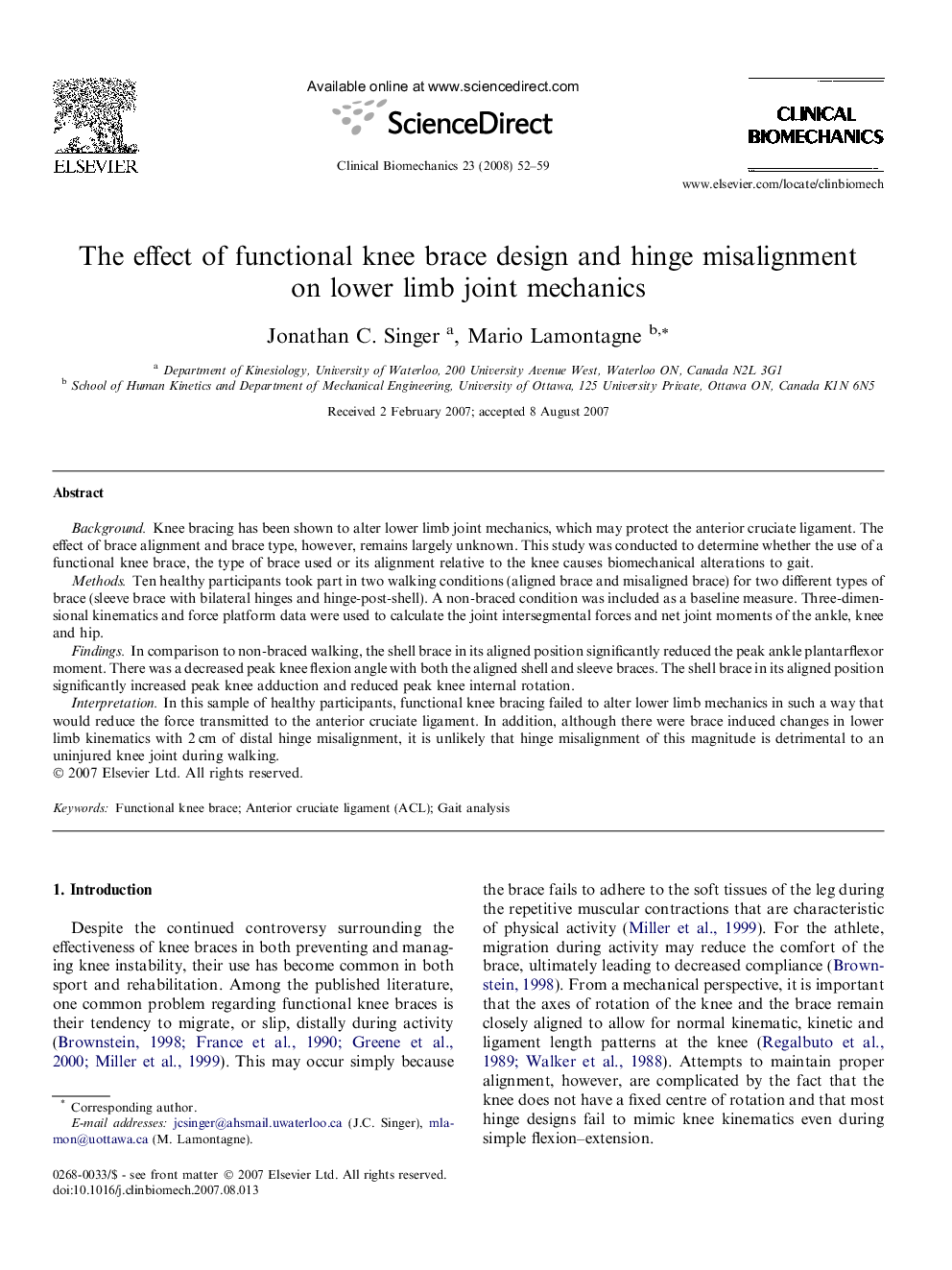| Article ID | Journal | Published Year | Pages | File Type |
|---|---|---|---|---|
| 4051666 | Clinical Biomechanics | 2008 | 8 Pages |
BackgroundKnee bracing has been shown to alter lower limb joint mechanics, which may protect the anterior cruciate ligament. The effect of brace alignment and brace type, however, remains largely unknown. This study was conducted to determine whether the use of a functional knee brace, the type of brace used or its alignment relative to the knee causes biomechanical alterations to gait.MethodsTen healthy participants took part in two walking conditions (aligned brace and misaligned brace) for two different types of brace (sleeve brace with bilateral hinges and hinge-post-shell). A non-braced condition was included as a baseline measure. Three-dimensional kinematics and force platform data were used to calculate the joint intersegmental forces and net joint moments of the ankle, knee and hip.FindingsIn comparison to non-braced walking, the shell brace in its aligned position significantly reduced the peak ankle plantarflexor moment. There was a decreased peak knee flexion angle with both the aligned shell and sleeve braces. The shell brace in its aligned position significantly increased peak knee adduction and reduced peak knee internal rotation.InterpretationIn this sample of healthy participants, functional knee bracing failed to alter lower limb mechanics in such a way that would reduce the force transmitted to the anterior cruciate ligament. In addition, although there were brace induced changes in lower limb kinematics with 2 cm of distal hinge misalignment, it is unlikely that hinge misalignment of this magnitude is detrimental to an uninjured knee joint during walking.
